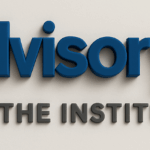A recent New Zealand survey found that about half of local professionals would consider looking for a new job in 2024.1 Limited career progression opportunities in their current company and uncompetitive pay are cited as the top reasons for looking elsewhere. How do you stop a similar exodus in your organization? In this article, we define the problem so you can compare the findings with your local experience, and then we’ll look at how you retain your best talent.
Some of the results:
- Those who have been in their roles from 3-5 years are the most likely to be dissatisfied, making them more likely to leave their role
- One in ten (12%) aged 44-58 are looking to leave their current jobs within the first three months of 2024
- Only 30% aged between 29 and 43 say there has been an increase in employee morale in the last 12 months
- Only 35% have seen a rise in productivity
As we are living during an era of the greatest digital business transformation, we are forced to ask if the emphasis on ‘digital’ is delivering potential benefits. Often, decisions are made that dramatically impact how tasks are completed and decision makers don’t feel the impact. They are the intellectual buyers of business transformation, not the emotional victims. Frustration and dissatisfaction ensue.
As businesses are generally aware of talent shortage being a growth inhibitor, workplace dissatisfaction is a real issue. Given that Covid19 broke traditional rituals that tied employees to workplaces, and as workforces became more mobile, those remaining were under increasing pressure to restore organizations to previous profit levels having lost a significant amount of experience. (Airlines, for example.) This type of pressure does not bode well for job engagement.
Do people want to work anymore?
This is the surprising title of an HBR article by Jame Heskett2. He says “Surveys indicate that US employee engagement and job satisfaction are down. To what degree are attitudes toward work to blame?”
He quotes Gallup research that “In 2023, employees felt more detached from—and less satisfied with—their organization … than they did four years ago.” He questions whether management policies or employee attitudes toward work are to blame.
This question brought to mind a couple of paragraphs in one of my favorite books: “People want their work to be challenging and interesting – they have for a long time, but more so now. Young people are often suspicious of established institutions of power and wealth. They believe that most organizations will destroy their individuality, which they feel to be both precious and perishable…..They have a strong distaste for hierarchical structures and when subjected to them…..they begin to press for reforms.” 3
The fact that this book was published in 1971 reminds us that the human being’s relationship with their work has not changed much in the digital era.
Understanding the issue
Digitization has made it possible to work remotely but does remote work promote engagement, and therefore retention, or does it merely make disengagement more bearable?
Current trends:
- 51% of currently employed workers say they are watching for or actively seeking a new job 4
- 66% of companies are asking employees to return to the office.5 (The Robert Half Salary survey reported that 16% of Gen Z agree that they might leave their current role due to a poor work-life balance.)
- Most organisations these days have at least some roles and tasks that can be done remotely
- People today of all ages (perhaps since the pandemic) are:
- less inclined to accept a desk- or office-based 40-hour work week
- more likely to expect to be consulted on key decisions
- likely to expect their mental and emotional experience of the work and management to be a positive one
Employee expectations now have a digital era flavor. This leaves managers uncertain of how to ‘control’ performance and results with employees now valuing work-life balance so highly.
The other pressure on managers is that, previously, they could see people in the office looking busy and this gave them the impression (illusion?) that work was being done. (For a current take on managing performance, see Rey Lugtu’s article: “Agile Performance Management.” 6)
Retaining top talent
At a time when attraction and retention of the right talent is crucial, engaged employees are 50% less likely to be watching for or actively seeking a job and seven times as likely to strongly agree they would recommend their workplace as a great place to work.7
1) Hiring approach
Heskett quotes a number of contributors who give these insights:
- Hiring for attitude is important for success but few companies are good at hiring on attitude
- Hiring for attitude means that you build a team of individuals who contribute positively to the overall work environment and company culture
- Getting to know the person and hiring for good fit with the company are keys to success with hiring practices
2) Business practices
Among the key determinants of employee stickability is company culture. A local CEO told me that an applicant said he would forego a significant percentage of salary for a great culture.
New Zealand came into the news recently with the publishing of a UK survey into the four-day work week. (In 2023, NZ’s The Four Day Week organization was named among Time’s most influential companies.8) Still a controversial concept, but one to keep an eye on.
3) Engagement
According to Gallup, managers are the single greatest driver of engagement and account for 70% of variance in team engagement levels. That, together with the concept of quality work through ‘ownership’, means that there is a lot that can be done to actively retain top talent. 7,9 The difference in the post-Covid Era is that the employee experience now includes where work is completed. (This has always been the case for Sales reps but not so for office workers.)
4) The Psychological Contract
Get back to Edgar Schein’s concept of a psychological contract between organisation and employee. Each manager mentally ‘contracts’ with each employee what role each will play in their success and managers facilitate a similar contracting process between individual and group. They define (and then review quarterly) what they will achieve for collective success and the most positive reputation (which gives them leverage.) Social contracting is a strong performance framework.
5) The Coach Approach – a performance partnership
Elite sportspeople are clear about their role and the coach’s role in success. They drive their performance and the coach guides and points to ways to get ahead. This works in business, too. Agree with the team (note: the team not your team – this is not a master/slave relationship) the target outcomes to achieve the department purpose and impact on the organization purpose with optimised efficiency and effectiveness (cf. Stephen Covey’s right things, right). Once agreed, each individual reports horizontally (not vertically) as to success or otherwise with continuous improvement as an underlying theme. Better application and ownership follows.
The manager ensures equity of contribution where this is not being adjusted among people, and raises aspects that need attention that are outside individual/team sight lines. Employees who are in charge of their own destiny are more engaged and less likely to leave as they simply keep recreating the challenge to stay valuable. As the organization keeps improving, everyone wins.
At a time of The Great Resignation, these are straightforward ways to not only retain talent but also to keep growing this crucial success driver.
Sources
- Robert Half 2024 Salary Guide. https://www.roberthalf.co.nz/salary-guide
- “Do People Want to Work Anymore?” by James Heskett. 4 Mar 2024 https://hbswk.hbs.edu/item/do-people-want-to-work-anymore
- Fordyce, J. & R. Weil. Managing with People. 1971. Addison-Wesley Publishing.
- Half of Your Employees Are Looking to Leave” by Matt Mosser. 27 July 27 2023
https://www.gallup.com/workplace/506819/half-employees-looking-leave.aspx - Why are we still grappling with hybrid work? 19 Feb 2024. Morgan McKinley.
https://www.morganmckinley.com/article/why-are-we-still-grappling-hybrid-work - “Agile Performance Management” by Rey Lugtu. Mar 23, 2023https://www.institutefordigitaltransformation.org/agile-performance-management/
- “Building Quality Jobs Through Ownership” by Areen Jalajel. 16 November 2023. Gallup Workplace
https://www.gallup.com/workplace/544361/building-quality-jobs-ownership.aspx - “NZ not-for-profit 4 Day Week Global named among Time’s most influential companies.” 22 June 2023. https://www.rnz.co.nz/news/national/492462/nz-not-for-profit-4-day-week-global-named-among-time-s-most-influential-companies
- What is Employee Engagement and how do you Improve it? Gallup Workplace.https://www.gallup.com/workplace/285674/improve-employee-engagement-workplace.aspx
Tag/s:Business TransformationEmployee ExperienceFuture of WorkPersonal Development





